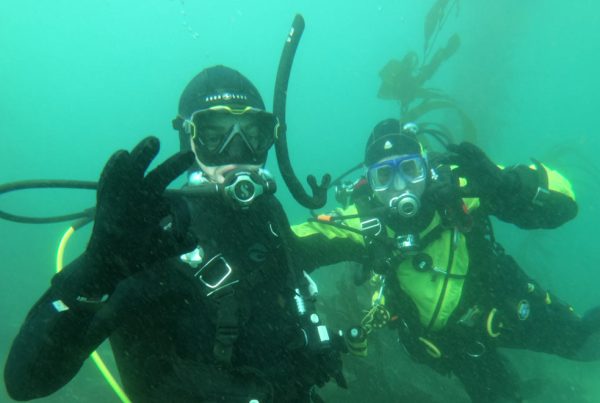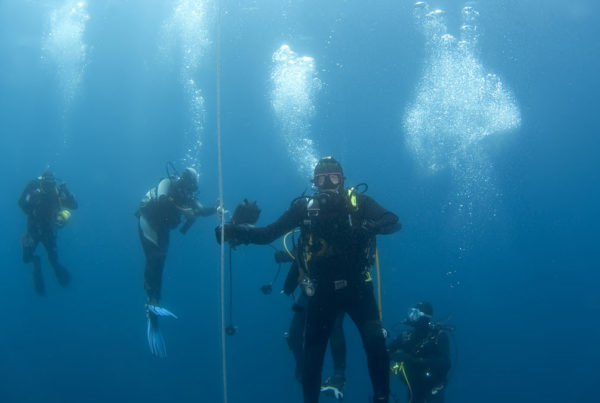When diving in a current, you want to plan properly and dive accordingly lest you be swept down current, away from your planned water exit point.
Rules of diving in a current are really simple. Always begin your dive upcurrent so your return trip will be easier. Off a boat, use a trailing current line with a float behind the boat should you overshoot the boat. Streamline your gear. These are all fundamentals that you probably learned in your basic scuba class.
But there are a few tricks that can make your next dive in stiff current easier. Or if you have hesitated current diving in the past, a few of these applied techniques will make you more comfortable with diving in rapidly moving water.
HUG THE BOTTOM
Current is almost always less at the bottom. In extreme circumstances, get very low to the bottom. On the bottom you also have the advantage of using your arms to pull yourself along. If on a sand bottom, you can use a knife to hold yourself in place or pull yourself through the water.
HIDING IN THE LEE
A reef with deep crevices, ledges, and pockets has natural havens away from the current and surge. Tucking into one of these protected spaces will give you time to rest up, relax, and enjoy the reef. A pause in the “lee” of a reef will also give you time to assess current strength and direction.
USING KELP
Hugging bottom, as mentioned above, can be an effective technique to avoid the effects of currents. Pulling yourself along using kelp holdfasts can also work, and kelp can also attenuate a stiff current.
But more important, and rarely used, is kelp’s usefulness in maintaining a controlled ascent rate and stationary position in a stiff current.
Ideally you would want to return to the anchor line or other ascent line. But that is not always possible. Ascending slowly and properly, and with a safety stop, in mid-water in a stiff current will carry you far down current. But California divers are lucky. We have ascent lines all around us: kelp stalks. When you are ready to ascend, pick a healthy looking stalk of kelp (you wouldn’t want it to break on you). Grab on and put a puff of air in your BC, becoming slightly buoyant. Slowly and carefully ascend. It takes a bit of practice but with a slight buoyancy, and by hanging on to the kelp, you will be able to settle into your safety stop with little or no problem, and yet not be dragged down current.
CHASE BOAT
I love diving with a professional dive charter boat operation. They do much of the work for you. With a chase boat, usually a small inflatable with an outboard, you can, with a plan, break the rules of current diving and just drift in the ocean’s raw power.
Of course sometimes a chase boat is used even when not planned. It’s nice in terms of peace of mind, but just because a chase boat is available is not a reason for sloppy current diving techniques.
As a diver you will need some way of signaling the chase boat. Sometimes just a raised hand (not waving unless an emergency) will suffice but having an inflatable signaling tube is best.










